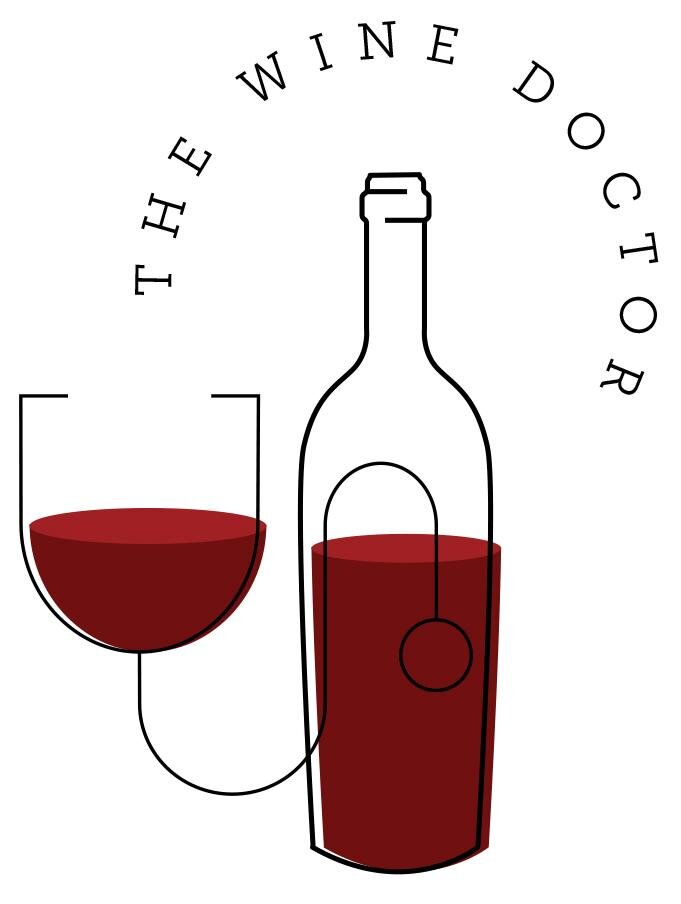Grigio or Gris?
Said another way, “Gray” or “Grey”? This is one of those choices with no downside…all are correct. You probably have a good idea of where we are headed. With summer around the corner, I thought a glass of Pinot Grigio might be in order. That would be Doctor’s orders…
My color reference is more than a spelling quiz; it is a translation. Grigio and Gris (pronounced “gree”), are the Italian and French words for grey. And it’s not just the same word, it is the same grape!
So how did this popular white sipper get tagged with such a drab last name? Very simply, the grape has a grayish, sometimes slightly pink hue to the skin. As we have learned with other varietals, the same grape can produce wines with noticeable differences, and Pinot Gris/Grigio is no exception.
In France, Pinot Gris has achieved its best expression in the northeastern region of Alsace, close to the German border. Here, Pinot Gris can be a little richer, a little more full-bodied. Think “texture”.
But we have Italy to thank for the global recognition and popularity this grape has developed as Pinot Grigio. This “Italian style” is a little lighter bodied, crisp and fresh. Perfect for so many summer settings and activities. So let’s go!
Some of Italy’s best Pinot Grigio comes from a region in their northeastern corner known as Friuli. This region is bordered by the country of Slovenia and the Adriatic Sea. Friuili enjoys warmer temperatures, but cooling breezes from mountains to the north produce perfect conditions for growing Pinot Grigio.
Typical Friuli soil: a mix of clay, sandstone and chalky limestone.
Our Wine: Jermann Pinot Grigio 2018. I got this one at my local Heinens for about $23.
Note the screw cap. Picnic and porch friendly!
Old World wine; New World label. Simple and to the point. On the back, you will find the region where the wine comes from, Friuli, prominently displayed. Ok, but who makes this wine?
Our wine comes from a 140 year-old family winery by the name of Jermann (pronounced “YER-man”). The founder, Anton Jermann, came to Friuli from Austria by way of Slovenia. Beginning in the early 1970s, Anton’s great-grandson Silvio brought many new techniques and ideas to Jermann. He created what became a renowned white blend called “Tunina”, now widely viewed as one of Italy’s finest white wines.
The Jermann estate in Friuli. Located in that red area on our map called Isonzo.
Today, Jermann owns over 400 acres, producing 16 different labels, both white and red. The family has a strong commitment to biodiversity and sustainable land management. The ultimate testimony to what the Jermann’s have built came two months ago, with the announcement of the sale of a majority interest in the family business to Italy’s Antinori family. The Antinoris are one of Italy’s most prominent wine families, producing great wines such as Tignanello in Tuscany and Stag’s Leap in Napa.
Tasting:
This wine shows that classic straw color in the glass. On the nose, your first impression is citrus, like lemon zest. Then it opens to a bit of green apple, followed by maybe a trace of almond, which you can get with Pinot Grigio/Pinot Gris. My first sip was surprisingly smooth, a “fuller” sensation than I was expecting. That lemon rind quality from the nose followed through on the initial hit. Acidity was in check, just enough to keep everything taught. The mid-palate was bright and crisp, with a finish that was longer than I expected. This is not your everyday Pinot Grigio. It is aromatic and layered. It keeps you coming back.
Food:
…or not! I get it, some people are totally happy with Pinot Grigio all by itself. And with good reason - it really is quaffable. But when you are ready for food, so is Pinot Grigio! As they say, “for best results”, I would stick with seafood. Here are some ideas: Creole shrimp with garlic & lemon; grilled squid salad (or crab salad); grilled halibut with a citrus based sauce (maybe a remoulade?); salmon sliders with a lemon caper aioli. Fried food? Bring it on! Fried veggie appetizers would be perfect.
I don’t know about you but I’m getting hungry…
The Bottom Line:
Where to begin? There is a lot of Pinot Grigio out there, and I encourage you to experiment. To be clear: you don’t have to spend $23 to get an enjoyable Pinot Grigio. I chose this one as maybe a “bookend” for a range of wines for you to try. However, make sure your Italian Pinot Grigio comes from either Friuli, or another great region further north, the Trentino-Alto Adige. This area, close to the Austrian border, makes Pinot Grigio in an even leaner, zippier style. And don’t forget Pinot Gris! See what part of the world suits your palate for this slightly richer, fruit-driven style: the Alsace in France, Oregon or maybe Australia & New Zealand.
So let’s get out there - summer’s waiting! Time to sip, learn and have fun (and don’t forget the sunscreen).
Until next time,
Cheers!





